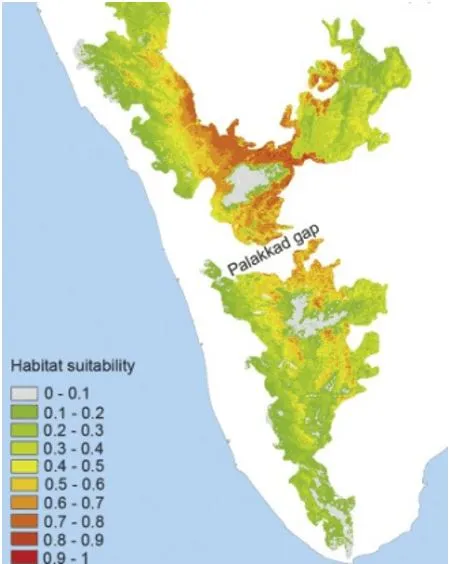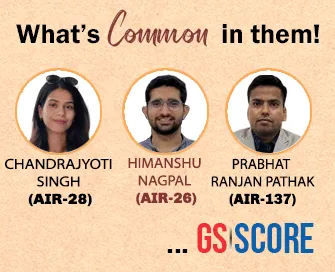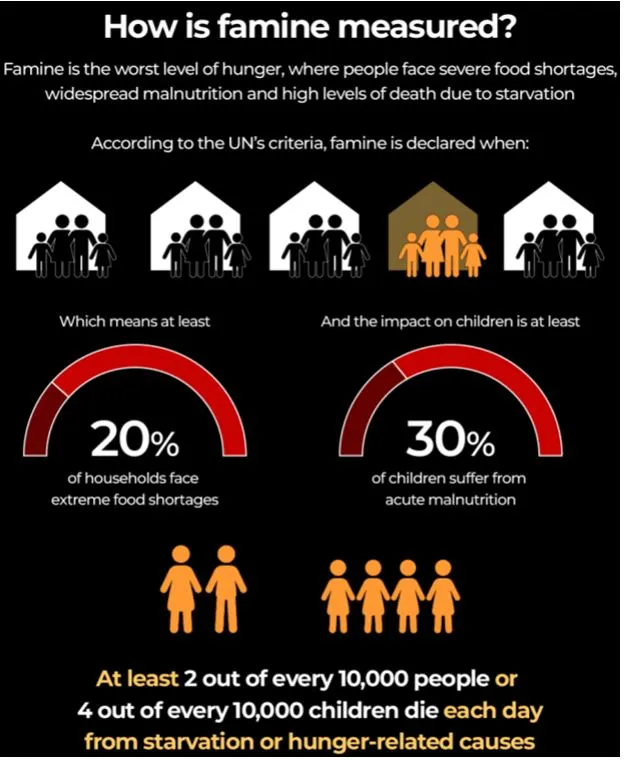

20th May 2025 (13 Topics)
Mains Issues
Context
Bengaluru witnessed unprecedented rainfall, leading to severe waterlogging and floods in several parts of the city. The heavy rainfall, or climatic pattern, known as the pre-monsoon or ‘mango showers’, is reportedly caused by a mix of weather conditions, mainly due to a cyclonic circulation over the Bay of Bengal and a weather line running from Maharashtra to Kerala, passing through Karnataka. These combined factors led to widespread downpour across the region.
What are Mango Showers?
- These rains are called mango showers because they usually occur in April and May, just before the southwest monsoon sets in, and help ripen the mango crop.
- They are common across southern India, particularly in Kerala, Karnataka, and Tamil Nadu.
- Geographical Trigger (The Western Ghats): Bengaluru lies on the leeward side of the Western Ghats, which typically blocks moist winds from reaching the Deccan Plateau. However, a natural break called the Palakkad Gap (a 40-km-wide valley in Kerala) acts like a wind tunnel, allowing the moisture-laden winds from the Arabian Sea to flow inland towards Bengaluru.
- Urban Heat & Orographic Lift: During the summer months, Bengaluru’s land surface heats up significantly. This causes convection, where warm air rises. When this rising air meets the cooler, moist winds funneled through the Palakkad Gap, clouds quickly form and result in sudden rainfall, often in the late afternoon or evening.

Geographic features of Hyderabad
|
Why are these showers causing flooding now?
- Unabated urbanisation: Now referred to as the Silicon Valley of India, Bangalore was once also known as the 'City of Lakes'. However, increased urbanisation seems to have changed the local landscape of the city.
- The Master Plan of 2015 claimed that Bangalore once had 400 lakes. But with the passage of time, government dataclaims that it reduced to 260 by the 1940s and has now come down to 65.
- Encroachment of lakes, tanks and drains: Bangalore, owing to its undulating terrain, is home to a plethora of lakes that are interconnected by a system of canals/drains called kaluve, which ensuresthe transfer of excess water from one lake to another. Although the city lacks a perennial river, tributary rivers like the Arkavathi, Pinakini/Pennar and Shimsha help to drain the excess water from the city and into the Kaveri river. However, the encroachment of lakes lead to interference in the city drainage system.
- Uncontrolled and unregulated construction activity: The high-rise structures has led to a 30 to 40-foot deep concrete layer under the city, preventing rainwater from percolating underground and contributing to flooding in various parts of the city.
- Climate Change: Pre-monsoon rains have become more intense and unpredictable. Warmer ocean temperatures in the Arabian Sea and changing wind patterns have amplified moisture content, making even pre-monsoon showers more powerful.
- Other reasons:
- Large-scale loss of green cover
- Lack of attention towards conserving and regulating floodplains of water bodies
Fact Box: Government Measures for Urban Flooding
|
PYQQ. The interlinking of rivers can provide viable solutions to the multi-dimensional inter-related problems of droughts, floods, and interrupted navigation. Critically examine. (2020) Q. Account for the huge flooding of million cities in India including the smart ones like Hyderabad and Pune. Suggest lasting remedial measures. (2020) |


Mains Issues
Context
Following heightened tensions after the Pahalgam terror attack and India’s military response under Operation Sindoor, questions arose over US President Trump's claims of brokering a ceasefire between India and Pakistan, prompting clarifications from the Indian government. In this backdrop, Foreign Secretary Vikram Misri appeared before a Parliamentary Standing Committee on External Affairs to clarify India’s official position and strategic posture.
Key Takeaways
- Ceasefire Was Bilateral, Not Mediated: The Director Generals of Military Operations (DGMOs) of both countries agreed to halt hostilities through direct communication. The Foreign Secretary confirmed that there was no third-party (including US) mediation in this process. India maintained routine diplomatic conversations with the US but did not involve it as a mediator.
- Significance: This highlights India's consistent position against third-party mediation in bilateral issues, especially Kashmir, which aligns with India's long-standing policy of strategic autonomy.
- Operation Sindoor and Conventional Deterrence: India launched Operation Sindoor as a punitive response to terror attacks. Indian Air Force targeted Pakistani military infrastructure and terror camps.The conflict remained within conventional limits—there was no nuclear posturing by Pakistan.
- Significance: It reflects India’s doctrine of "limited but effective conventional retaliation" in response to terrorism, without escalating to nuclear thresholds.
- This is aligned with India’s No First Use (NFU) nuclear policy and demonstrates the importance of credible conventional deterrence.
- Rebutting Nuclear War Narrative: Trump's claims about preventing a nuclear war were politically significant but lacked ground evidence. No indicators of nuclear signaling (like alerting of assets, rhetoric, or movement) were observed on Pakistan’s part.
- Significance: This shows the role of strategic stability in South Asia and how narratives around nuclear escalation can sometimes be exaggerated by external powers. It also reflects on India’s mature handling of nuclear diplomacy.
- Diplomatic Balancing: IMF and Turkey: The IMF recently approved a USD 1 billion bailout to Pakistan, which has economic and geopolitical implications. Turkey’s open criticism of Operation Sindoor and support for Pakistan led to strained India–Turkey ties.
- Significance: Economic tools like IMF bailouts are increasingly part of geopolitical bargaining. India must balance its economic diplomacy with multilateral financial institutions and its bilateral ties with nations like Turkey, especially when they involve Islamabad and Kashmir.
- Parliamentary Oversight in Foreign Policy: The Standing Committee included members from across political lines. The discussion indicates how India’s foreign policy is increasingly being scrutinized by democratic institutions, which is essential for transparency and accountability.
- Significance: It demonstrates how parliamentary committees play a key role in shaping and reviewing India's external engagement strategies. It adds to the understanding of checks and balances in India's foreign policy architecture.
- Significance: It reflects India’s doctrine of "limited but effective conventional retaliation" in response to terrorism, without escalating to nuclear thresholds.


Mains Issues
Context
Global oil markets are witnessing major shifts due to slowing demand growth, rising geopolitical competition among producers, and the growing push toward clean energy. Amid this, a fresh conflict has emerged—not with weapons, but with oil barrels—as key oil-producing nations engage in a strategic price war that could have significant global and domestic consequences.
Why is OPEC+ increasing production now?
- Supply-Demand Imbalance Post-COVID: After the pandemic, the world hoped for a quick economic rebound. However, what actually happened was a K-shaped recovery — where only certain sectors and countries bounced back strongly, while others struggled.
- As a result, global oil demand grew sluggishly, and producers — especially those with smaller economies — began pushing their own output to earn revenues, leading to oversupply.
- Saudi Arabia’s Changing Strategy: As the largest producer in OPEC+, Saudi Arabia had cut production deeply (by 3 million barrels/day in 2023-24) to support prices. But when other OPEC+ countries like Iraq, UAE, Nigeria, and Kazakhstan failed to stick to their promised cuts, Saudi Arabia lost patience.
- Riyadh has now chosen to flood the market with oil again — a tactic it has used in the past (1986, 1998, 2014, 2020) to discipline overproducers and retain market share. This may lead to another oil price war, a situation where prices are pushed lower intentionally to squeeze out less efficient producers.
Why Are Oil Prices Still Falling Despite These Moves?
Despite Saudi Arabia’s efforts, prices fell sharply — Brent crude went as low as USD 60/barrel, its lowest since the pandemic — before stabilizing near USD 65. This is due to several structural changes in the global oil landscape:
- Peak Oil Demand: The International Energy Agency (IEA) now predicts oil demand will grow by just 0.73% in 2025 — extremely slow by historical standards. This brings credibility to the “Peak Demand” theory — the idea that global oil use will plateau or decline before 2030. Key reasons:
- EV revolution, especially in China
- Climate commitments and net-zero goals in Europe and elsewhere
- Shift to renewables and hydrogen
- Slowing global economic and trade growth (post-Trump’s tariff policies and post-pandemic fatigue)
- Fragmented Oil Supply: Today’s oil market is more fragmented than before:
- Shale oil from the U.S.
- New producers like Brazil, Guyana, etc.
- Heavy investments in offshore and deep-sea fields that are now operational.
- Even at lower prices, these producers keep pumping oil to recover investments — worsening the supply glut.
- Geopolitical Calculations and U.S. Influence: Saudi Arabia’s latest moves may also be politically motivated:
- It is a show of alignment with President Trump, who is pressing for lower oil prices to tame U.S. inflation.
- The move coincides with an expected S.-Saudi arms deal and defence agreement (USD 100 billion)
- There’s also anticipation of sanctions easing on Russia, Iran, and Venezuela, which could add more oil to the market — so Saudi wants to pre-position itself at a competitive level.
India: Caught in the Crossfire
- India is the third-largest oil importer globally and is deeply impacted by such fluctuations. In 2024–25, India spent USD 137 billion on crude imports.
|
Short-Term Benefits: |
Long-Term Risks: |
|
|
India’s Measures to Reduce Oil Imports
- FDI in Oil and Gas PSUs: In 2021, the government allowed 100% Foreign Direct Investment (FDI) in oil and gas Public Sector Undertakings (PSUs) under the automatic route, encouraging private and foreign investment in India’s energy sector.
- Coal Bed Methane (CBM): India is exploring Coal Bed Methane as an alternative energy source to reduce its dependence on crude oil. CBM is a natural gas extracted from coal beds, which is seen as a cleaner alternative.
- Underground Coal Gasification (UCG): The government is using UCG to convert coal into synthetic gas, which can be used for electricity generation and industrial processes. This helps in reducing dependence on imported oil and gas.
- National Gas Hydrate Programme (NGHP): India is also exploring gas hydrates (frozen methane deposits found under the ocean floor) as a potential energy source. NGHP aims to map these resources and explore their commercial viability.
- Open Acreage Licensing Policy (OALP): Under the OALP, India has opened up oil and gas exploration to private and foreign companies, allowing them to bid for exploration blocks in unlicensed areas. This aims to boost domestic oil and gas production.
Working of Crude Oil Market
OPEC+
|


Mains Issues
Context
As of April 2025, India's unemployment rate stands at 5.1% for individuals aged 15 years and above, according to the Ministry of Statistics and Programme Implementation (MoSPI). This figure emerges from India's first-ever monthly Periodic Labour Force Survey (PLFS), marking a significant shift from the previous practice of releasing employment data quarterly or annually.
New Monthly Labour Data
- The introduction of monthly labour data aims to provide more timely and granular insights into the employment landscape across the country.
- This change is expected to enhance policy responsiveness and economic planning by offering up-to-date information on employment trends.
- Key Labour Market Indicators
- Labour Force Participation Rate (LFPR): In April 2025, the LFPR for individuals aged 15 years and above was 55.6%. This rate was higher in rural areas (58.0%) compared to urban areas (50.7%).
- Worker Population Ratio (WPR): The WPR, indicating the proportion of the working-age population that is employed, stood at 52.8% nationally. Rural areas had a higher WPR (55.4%) than urban areas (47.4%).
- Gender Disparities in Employment: The data reveals notable gender disparities in employment indicators:
- Unemployment Rate: Among males, the unemployment rate was slightly higher at 5.2%, compared to 5.0% for females.
- Labour Force Participation Rate: Male LFPR was significantly higher at 77.7%, while female LFPR was 34.2%.
- Worker Population Ratio: The WPR for males was 73.7%, whereas for females, it was 32.5%.
- Youth Unemployment: Youth unemployment (ages 15-29) remains a concern, with an overall rate of 13.8%. Urban youth face higher unemployment rates (17.2%) compared to their rural counterparts (12.3%).
- It's important to note that the Centre for Monitoring Indian Economy (CMIE), an independent think tank, reported a higher unemployment rate of 7.73% for April 2025. The discrepancy arises due to differences in survey methodologies and data collection approaches between CMIE and MoSPI.
- Implications for Policy and Planning:
- The shift to monthly labour data reporting is a significant development for India's economic planning. It allows for more responsive and targeted policy interventions to address employment challenges. The data highlights the need for focused strategies to improve urban employment opportunities, address gender disparities, and tackle youth unemployment.
- By providing more frequent and detailed labour market information, policymakers can better understand the dynamics of employment across different regions and demographics, leading to more effective and inclusive economic policies.


Prelims Articles
Context
To improve the livelihoods of tribal farmers with forest land rights, the Telangana government has launched a major solar irrigation initiative under the new scheme Indira Soura Giri Vikasam, focusing on sustainable agriculture and tribal welfare.
About the Scheme: Indira Soura Giri Vikasam
- The Scheme aims to promote solar-powered irrigation and support tribal farmers holding land under the Forest Rights Act (RoFR), 2006.
- Key Features:
- 100% subsidy: Each beneficiary receives a solar pump set worth ?6 lakh completely free of cost.
- Duration: Implemented over five years.
- Coverage: Aims to provide irrigation support to 6 lakh acres of farmland.
- Target Beneficiaries: Approximately 1 lakh tribal farmers holding RoFR titles. The focus is on those practicing agriculture in forest fringe areas with limited access to conventional power and irrigation.
- The state government has recognised and vested rights over forest for 2,30,735 Scheduled Tribes covering an extent of 6.69 lakh acres under the RoFR Act, 2006.
Related Schemes:
|


Prelims Articles
Context
To tackle rising cases of cyber financial frauds and speed up investigations, the Ministry of Home Affairs has launched the e-Zero FIR initiative under the Indian Cybercrime Coordination Centre (I4C), initially as a pilot in Delhi.
What is the e-Zero FIR initiative?
- e-Zero FIR is a digital mechanism to automatically register FIRs for cyber financial crimes (like online fraud, UPI scams, phishing) reported through:
- Cyber helpline number 1930
- National Cybercrime Reporting Portal gov.in
- Key Features:
- Auto-FIR Generation: It converts verified complaints into First Information Reports automatically—without visiting a police station.
- No jurisdiction barrier: Victims can report crimes from anywhere; FIR will be registered instantly and electronically, enabled by Section 173 (1)(ii) of the Bharatiya Nagrik Suraksha Sanhita (BNSS).
- Threshold Limit: It is applicable for complaints involving Rs 10 lakh or more
- Real-time action: It enables quicker blocking of fraudulent transactions/accounts.
- Integrated platform: It links banks, law enforcement, telecom companies, and CERT-In for swift response.
- It is part of I4C’s broader efforts to implement the National Cybercrime Ecosystem, enhancing tech-based policing.
- Associated Schemes & Institutions:
- Indian Cybercrime Coordination Centre (I4C) is the nodal body under Ministry of Home Affairs to fight cybercrime in a coordinated manner.
- CERT-In handles cybersecurity threats.
- Digital Police Portal maintains criminal and FIR databases.
Fact Box: Zero FIR
|


Prelims Articles
Context
Despite a rise in registrations, the actual delivery of promised employment under MGNREGS has declined, exposing gaps in the scheme’s implementation, as per a recent report.
Major Issues Identified in the Report
- Fall in Person Days Generated: States like Odisha (–34.8%), Tamil Nadu (–25.1%), and Rajasthan (–15.9%) saw significant drops in person-days. Only a few like Maharashtra (+39.7%) and Bihar (+13.3%) registered increases. Regional disparity in employment generation continues to be a major issue.
- Inadequate Budget Allocation: Policy advocates recommended Rs 2.64 lakh crore in 2022–23. But allocation for FY 2024–25 was only Rs 86,000 crore, with no mid-year revisions, despite inflation and rising demand. This mismatch severely limits job provision.
- Delayed Wage Payments: Across many states, extraordinary delays in wage disbursal have demotivated workers. This affects trust in the system and discourages participation.
- Payment delays violate the MGNREGA Act itself, which mandates wage payment within 15 days.
- Deletions of Job Cards: Between 2022–24 7.8 crore job cards deleted, but only 1.92 crore added. FY 2024–25 shows some improvement, 99 lakh deletions, but 2.22 crore new additions — first time additions exceeded deletions.
About MGNREGS
|


Prelims Articles
Context
The Supreme Court dismissed fresh pleas by telecom companies seeking relief in the payment of Adjusted Gross Revenue (AGR) dues, reaffirming its earlier judgments and stating that no reassessment of dues would be allowed.
What is AGR?
- Adjusted Gross Revenue (AGR) is the base of revenue on which telecom companies pay license fees (8%) and spectrum usage charges (3-5%) to the Department of Telecommunications (DoT).
- As per DoT, AGR includes all revenues (core + non-core like handset sales, interest income).
- Telecom operators argued AGR should only include core telecom revenue.
- In 2019, the Supreme Court expanded the definition of AGR and included all revenues earned by telecom companies, including non-core income like rent from infrastructure and interest, which massively increased the dues for companies in the sector like Vodafone Idea and Bharti Airtel.
- Following this move, the total dues that were expected to be paid by the telecom industry to DoT were reported at over Rs 1.47 lakh crore. The court set a repayment timeline of 10 years and rejected telecom companies’ requests for longer periods or reductions in the amount paid.


Prelims Articles
Context
Gaza is facing what the World Health Organization (WHO) now calls one of the worst hunger crises in the world. With a population of 2.1 million under blockade, food and essential aid are nearly impossible to access. The situation is so severe that almost half a million people are in “catastrophic” conditions, where hunger, malnutrition, disease, and death are interlinked.
What is famine and when is it reached?
- Famine is the worst level of hunger, where people face severe food shortages, widespread malnutrition, and high levels of death due to starvation.
- According to the UN’s criteria, famine is declared when:
- At least 20 percent (one-fifth) of households face extreme food shortages
- More than 30 percent of children suffer from acute malnutrition
- At least two out of every 10,000 people or four out of every 10,000 children die each day from starvation or hunger-related causes.
- Famine is not just about hunger; it is the worst humanitarian emergency, indicating a complete collapse of access to food, water and the systems necessary for survival.
- Starvation is when the human body is deprived of food for so long that it suffers and often dies. The body can last up to three weeks without food, but the length of time varies between individuals. Starvation occurs over three stages.
- The first begins as early as when a meal is skipped
- The second occurs with a prolonged period of fasting where the body uses stored fat for energy.
- The third, and often fatal, stage is when all stored fats have been depleted and the body turns to bone and muscle as sources of energy.



Prelims Articles
Context
The Supreme Court stepped in to facilitate cooperation between Tamil Nadu and Kerala, focusing on urgent repair and safety works around the dam.
What is the Mullaperiyar Dam dispute?
- The Mullaperiyar Dam, built in 1895 on the Periyar River in Kerala's Idukki district, is owned, operated, and maintained by Tamil Nadu based on a lease agreement signed in 1886 between the then Travancore kingdom and the Madras Presidency (British rule).
- While the dam is located in Kerala, it serves Tamil Nadu by providing irrigation and drinking water, especially to the southern districts like Theni, Dindigul, and Madurai.
- Kerala has for long raised safety concerns about the 125-year-old dam, especially because it's in a seismically sensitive area.
- Tamil Nadu, on the other hand, maintains that the dam is structurally safe and wants to carry out essential repairs and maintenance, but Kerala has sometimes restricted access or raised environmental objections.
- This has led to a long-standing inter-state dispute, involving multiple cases in the Supreme Court over decades.


Editorials
Context
Former US President Donald Trump undertook a significant tour of the Gulf region (Saudi Arabia, Qatar, UAE). Unlike his 2017 visit, this time the emphasis was on securing massive economic deals while consciously excluding contentious geopolitical issues such as Israel, Iran, and Palestine from the agenda.
Strategic Reorientation of US-Gulf Relations
- Detachment from Israel-centric Agenda: Unlike the 2017 visit, Trump avoided any public engagement on Israel-related issues. The US had recently concluded talks with Hamas and the Houthis without involving Israel, reflecting a calculated geopolitical detachment.
- Empathy for Arab Culture: Trump reversed his earlier anti-Islamic stance by lauding Gulf leaders and their modernisation drives. He praised the cultural identity of the region and even criticized past US interventions for destabilizing West Asia.
- Symbolic Shift in Narrative: In his Abu Dhabi mosque address, Trump emphasized the region’s “amazing culture” and credited Gulf leadership for combating extremism — a clear contrast to his earlier “Islamic extremism” discourse of 2017.
Commercial Diplomacy and Investment Focus
- Mega Deals and Defence Sales: Saudi Arabia signed deals worth USD 742 billion, including a USD 142 billion arms agreement and USD 600 billion in trade and investment partnerships in energy, mining, semiconductors, and data centers.
- Qatar and Boeing Contract: Qatar inked USD 244 billion in agreements, including the purchase of 210 Boeing jets valued at USD 96 billion, and defence investments worth USD 38 billion in maritime and air security systems.
- UAE’s USD 1.4 Trillion Investment Framework: The UAE announced a landmark framework focused on AI, energy, and semiconductor infrastructure — indicating a strategic alignment with US technological interests.
Limited but Symbolic Geopolitical Engagements
- US-Syria Diplomatic Breakthrough: Trump met Syrian President Ahmed al-Sharaa in Riyadh, marking the first US-Syria presidential interaction in 25 years. US sanctions on Syria were lifted during the meeting.
- Progress on Iran Nuclear Talks: Trump announced in Doha that Iran had “sort of agreed” to the terms negotiated in Muscat — a move welcomed by observers as bypassing Israeli objections.
- Optics over Substance in Strategic Realignment: Despite transactional optics, commentators argue the deals are unlikely to materialize fully. Gulf monarchs reciprocated with symbolic gestures tailored to Trump’s image as a “deal-maker.”
Practice Question:
Q. Critically examine the shift in US foreign policy towards the Gulf region during Donald Trump's 2025 visit, with reference to the strategic exclusion of Israel and emphasis on economic diplomacy. Discuss the implications for regional stability and US credibility in West Asia.


Editorials
Context
The Panchayat Advancement Index (PAI) Baseline Report 2022-23, officially released in April 2025 by the Ministry of Panchayati Raj, provides data-driven insights into over 2.16 lakh Gram Panchayats across India, aligning with the Localization of Sustainable Development Goals (LSDGs). It marks a paradigm shift in micro-level planning by making grassroots data accessible, actionable, and outcome-linked.
Data Governance Challenges and Need for Decentralisation
- Inaccessible Format of Government Data: Despite the National Data Sharing and Accessibility Policy (NDSAP), 2012 and vast data availability (e.g., data.gov.in), much of the data is not in user-friendly formats, limiting utility for citizens, elected representatives, and researchers.
- Lack of Micro-Level Focus in Data Portals: Existing portals primarily cater to departmental heads and top bureaucrats, ignoring functional needs at district, block, and Gram Panchayat (GP) levels, hence failing to deliver a ‘micro picture’.
- Deficient Analytical and Visual Tools: Poor data visualisation and analytics result in policymaking based on bureaucratic intuition rather than evidence, undermining localized planning and informed interventions.
Significance and Features of Panchayat Advancement Index (PAI)
- Composite Framework with 566 Data Points: PAI uses 435 unique local indicators (331 mandatory + 104 optional) across nine LSDG themes, mapped to the National Indicator Framework (MoSPI), to assess GP-level development comprehensively.
- Extent of Validation and Participation: The report analysed data from 2.16 lakh GPs, excluding around 11,000 due to non-validation; Uttar Pradesh notably submitted data for only 40% (23,207 of 57,702 GPs), raising concerns about coverage and accountability.
- User-Friendly and Actionable Interface: The PAI portal enables constituency-wise reporting and supports interventions by MPs, MLAs, and line department officials. It clearly identifies gaps in domains like health and education for immediate follow-up by multiple stakeholders.
Transformative Potential and Way Forward
- Tool for Targeted SDG Interventions: The PAI links data to measurable outcomes (e.g., “Healthy Panchayat” indicators), encouraging accountability, stakeholder convergence, and precise interventions to plug development gaps.
- Role of Academic and Civic Institutions: Involvement of over 4,000 Unnat Bharat Abhiyan institutions is proposed for grassroots capacity-building, using PAI scores to educate communities and enable corrective action.
- Need for Institutional Support & Replication: Deployment of trained data analysts at block and district levels is crucial for periodic reporting. A similar index for urban local bodies is also needed to extend the evidence-based approach.
Practice Question:
Q. Discuss how the Panchayat Advancement Index (PAI) can redefine local governance in India. Examine its role in evidence-based planning, stakeholder convergence, and sustainable development. What institutional and structural support is essential for its effective implementation?


Editorials
The Ministry of Statistics and Programme Implementation (MoSPI) has released the first-ever monthly data from the revamped Periodic Labour Force Survey (PLFS) for April 2025, replacing the earlier quarterly urban-only updates. The overhaul includes enhanced frequency, improved methodology, and expanded sample size, making it a crucial step in generating credible, timely labour market data critical for policymaking and investor confidence.
Structural and Methodological Changes in PLFS
- Improved Frequency of Labour Data: The PLFS now provides monthly labour force statistics, replacing the earlier annual and quarterly updates (the latter limited to urban areas). This shift fills the gap for real-time, high-frequency labour data during disruptions like pandemics or economic shocks.
- Enhanced Sample Design: The sample size has been increased by 2.65 times to 2,72,304 households per round, significantly improving the statistical robustness and national representativeness of the estimates.
- District-Level Focus: The district has now become the primary sampling unit, ensuring wider geographical coverage, and enhancing the granularity of labour data at sub-state levels, which was earlier missing.
Implications for Policy, International Reporting, and Data Credibility
- Calendar-Year Alignment: Annual PLFS cycles will now follow the calendar year (January–December) instead of the previous July–June format, ensuring better integration with global databases and international comparability.
- Support to Evidence-Based Policy: The improved PLFS enables real-time evaluation of employment trends, assisting in responsive labour policy, especially in volatile post-COVID and post-reform environments.
- Addressing Investor Expectations: With India aiming to attract global capital, timely and credible labour data becomes non-negotiable, enhancing data transparency and policy credibility.
Key Trends from April 2025 Monthly PLFS
- High Urban Unemployment: India’s overall unemployment rate is 1%, but it rises to 6.5% in urban areas, indicating urban labour market stress.
- Gendered Disparities: Urban female unemployment is 7%, far above the national average, exposing persistent gender disparities in employment access.
- Youth Unemployment Crisis: Among the 15–29 age group, unemployment is 8% all-India, 17.2% in urban areas, and a staggering 23.7% among young urban women, highlighting a critical demographic challenge.
Practice Question
Q. In the context of India's evolving labour market, examine the significance of the recent reforms in the Periodic Labour Force Survey (PLFS). How can high-frequency, granular labour data influence policymaking and investment climate in India?




